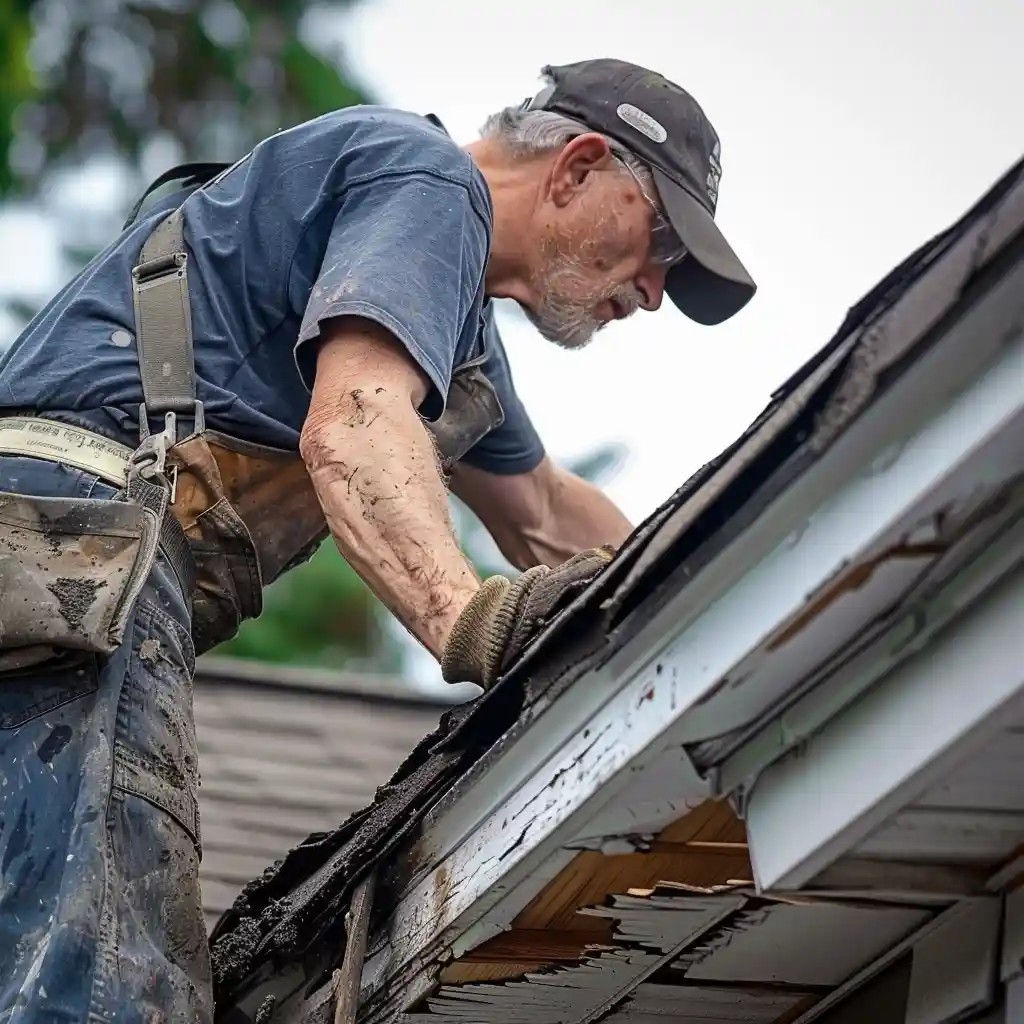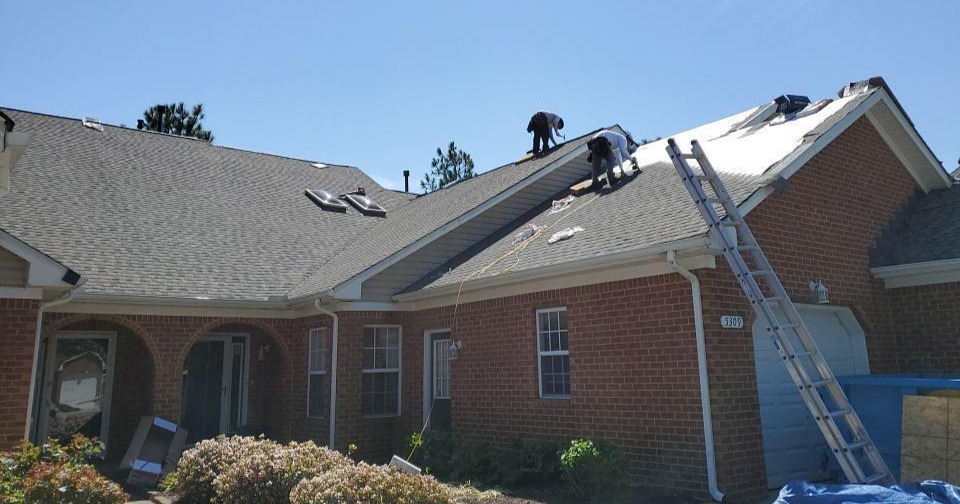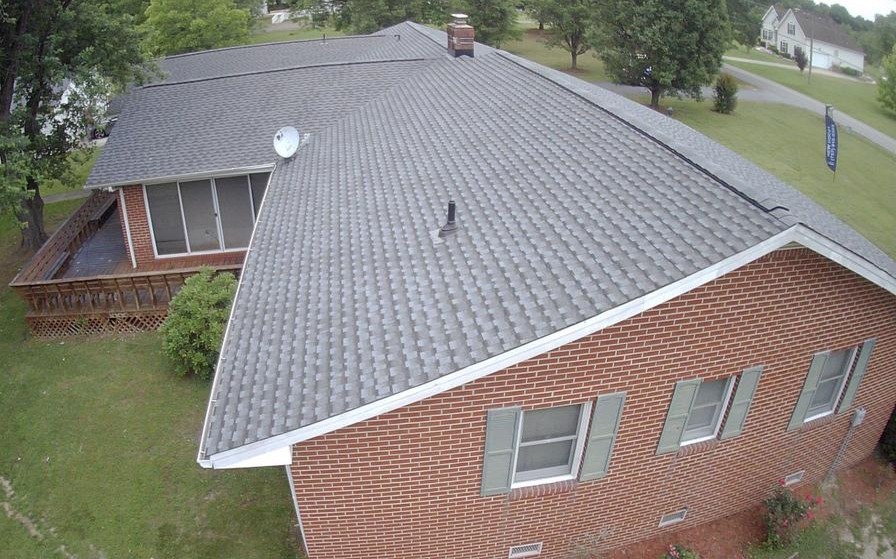Is a new roof a capital improvement or repair?
Use our quick contact form to get in touch with our team. We will respond shortly.

A new roof is typically considered a capital improvement if it adds significant value, extends the useful life of the property, or replaces the roof entirely. However, minor roofing work, like patching a leak or replacing a few shingles, is classified as a repair. The distinction depends on the scope, intent, and outcome of the project—and can have important tax and financial implications.
At WT Anderson Roofing & Siding, we frequently encounter homeowners in Virginia Beach and surrounding areas grappling with an important question: Is a roof replacement a capital improvement or a repair? This isn't just a matter of semantics; the classification has significant implications for your property's value, financial planning, and even potential tax benefits. Understanding the difference is crucial, and we're here to help you navigate these often-confusing waters.
Many assume a new roof is always an upgrade, but the truth is more nuanced. The distinction hinges on the nature of the work performed, its purpose, and its effect on the property's overall condition and lifespan. Let's get into the specifics to provide clarity.
Defining the Key Terms: Capital Improvement vs. Repair
To truly understand whether your roofing project falls into one category or the other, we must first establish clear definitions for both capital improvement and repair. These terms are often used interchangeably, but they represent fundamentally different types of work from an accounting and value perspective.
What is a Capital Improvement?
A capital improvement is an expenditure that adds to the value of your property, prolongs its useful life, or adapts it to new uses. It's a significant investment that goes beyond simply maintaining the existing condition. When we talk about a roof replacement as a capital improvement, we're typically referring to a project that:
- Adds significant value: A brand-new roof, especially one with enhanced materials or energy efficiency, can notably increase your home's market value.
- Extends the useful life: Replacing an old, failing roof with a new one effectively gives the entire structure a "new lease on life," extending its usability for many years.
- Adapts for new uses: While less common for a full roof replacement, if a new roof system enables the addition of solar panels or a rooftop deck, it contributes to new functionality.
- Is a substantial financial investment: Unlike minor fixes, a full roof replacement involves a considerable cost, which is capitalized over the life of the asset.
According to IRS rules, permanent improvements like replacing an entire roof are usually considered capital expenses. These are costs that are added to the basis of your property rather than being deducted as immediate expenses.
What is a Repair?
In contrast, a repair is an expenditure that restores your property to its original operating condition. It's about maintaining the property, not enhancing it or prolonging its useful life beyond its original expectation. Think of it as routine maintenance expense. For roofing, common repairs include:
- Patching a small leak.
- Replacing a few missing shingles.
- Sealing minor cracks.
- Clearing debris from gutters to prevent issues.
The primary reason for a repair is to keep the property in good working order. These are typically smaller, more frequent expenses aimed at preventing deterioration or fixing minor damage. A roof repair would typically be considered a maintenance expense because it doesn't significantly add to the property's value or extend its overall lifespan.

The Nuance: When a Repair Becomes a Capital Improvement
This is where the distinction can become tricky, especially with roof work. Sometimes, a project that starts as a response to damage can evolve into something more substantial, blurring the lines between a simple repair and a full capital improvement.
Sudden Damage vs. Planned Upgrade
One of the key differentiators is the impetus behind the project.
If your new roof was necessitated as part of a repair due to sudden damage, such as extensive storm damage that makes the existing roof unsalvageable, then the replacement might be viewed differently. While the cause was a repair need, the scope of the necessary roof work can transform it into a capital expenditure. For instance, if a hurricane rips off 70% of your roof, replacing the entire roof, even though it's a direct result of damage, often becomes a capital expense because you're installing a completely new asset rather than merely fixing a small part.
Conversely, if you decide to replace your aging roof before it fails, perhaps to improve energy efficiency or enhance curb appeal, it's clearly a planned capital improvement.
Scope of the Project: Small Fixes vs. Comprehensive Overhaul
The scale of the project is a major determinant. Repairs and maintenance can sometimes turn into capital improvements if the project is found to be too big to fix with just a few small repairs.
- Small-scale fixes: Replacing a handful of shingles or patching a specific leak falls squarely under repair. The goal is to restore a localized area to its previous condition.
- Comprehensive overhaul: If the entire roof system is compromised, or if the extent of the damage is so significant that it necessitates a complete tear-off and replacement, this is typically categorized as a capital improvement. A full roof replacement means installing a new system, not just mending the old one. This is a capital expenditure due to its substantial financial investment and long-term enhancement of the property.
Restoration vs. Repair
The term "restoration" often comes up in this context. If the cost of the roof work is capitalized as a restoration, it implies a significant undertaking to bring the property back to a former, usually improved, state, or to rebuild a major component. This is distinct from a simple repair. A restoration project usually involves a complete overhaul or replacement of a major system, like a full roof, rather than just patching it up. It's part of a larger improvement to the property.
Why Does This Distinction Matter?
Understanding whether your new roof is a capital improvement or a repair extends beyond mere definitions. It has real-world implications, particularly regarding your finances and potential tax obligations.
Financial Implications and Investment
From a financial perspective, a capital improvement is viewed as an investment in your property. The cost of a new roof, when classified as a capital improvement, adds to your property's "cost basis." This higher basis can reduce the amount of capital gains tax you might owe when you sell the property in the future. It's an asset that depreciates over time (for rental properties) or reduces future taxable gain (for primary residences).
A repair, on the other hand, is generally considered an immediate expense. While it preserves the property, it doesn't typically add to its long-term value in the same way a capital improvement does.
Tax Implications for Homeowners
For homeowners, the primary tax implication of a capital improvement relates to the sale of your home. As mentioned, the cost of a capital improvement increases your home's cost basis. When you sell your home, your taxable gain is calculated as the selling price minus your adjusted cost basis. A higher basis means a lower taxable gain.
While immediate deductions for homeowners are rare for capital expenses, keeping accurate records of these improvements is vital for future tax planning. According to IRS Publication 527, permanent improvements like replacing an entire roof are usually considered capital expenses. We always recommend consulting with a qualified tax professional to discuss your specific situation, as tax rules can be complex and vary.
Rental Property Considerations
For landlords and rental property owners, the distinction is even more critical. IRS rules allow rental property owners to deduct expenses related to their properties.
- Repairs: The cost of repairs to a rental property can generally be deducted in the year they are incurred. This provides an immediate tax benefit.
- Capital Improvements: The cost of capital improvements to a rental property cannot be fully deducted in the year they are incurred. Instead, they must be depreciated over the asset's useful life (typically 27.5 years for residential rental property). While not an immediate deduction, depreciation allows you to recover the cost of the improvement over time, reducing your taxable income annually.
Most rental property expenses related to maintenance and physical improvements (such as a new roof) can be considered capital expenditures if they significantly enhance the property or extend its life. This is a key area where careful record-keeping and professional advice are essential.
Key Questions to Ask Yourself
When trying to determine if your roofing project is a capital improvement or a repair, asking a few targeted questions can help you differentiate:
1. Does it Add Significant Value or Extend Useful Life?
- If yes: It's likely a capital improvement. A new roof, especially one that's a complete replacement, inherently adds significant value and extends the life of the entire structure.
- If no: It's likely a repair. Patching a few shingles simply restores the current condition without adding new value or significantly extending the roof's overall lifespan.
2. Is it a New Component or a Fix to an Existing One?
- New Component: A full roof replacement involves installing a completely new system. This points strongly towards a capital improvement.
- Fix to Existing: If you're simply mending a small part of the existing roof, like replacing a single vent or repairing a localized leak, it's a repair.
3. Was it Caused by Sudden, Unexpected Damage?
- Yes, and required a full replacement: Even if caused by damage, if the scale of the roof work necessitated a complete tear-off and installation of a new roof, it often transitions into a capital improvement. The reason for the work was damage, but the outcome is a new asset.
- Yes, but only minor fixes were needed: If the damage was localized and could be fixed with small, targeted repairs, it remains a repair.
Navigating Your Roofing Project with WT Anderson Roofing & Siding
Understanding whether your new roof is a capital improvement or a repair is a critical step in prudent property management. Our team at WT Anderson Roofing & Siding is dedicated to not only providing top-tier roofing services but also to helping our clients make informed decisions.
Our Expertise in Virginia Beach and Beyond
We've been serving the Virginia Beach community for years, building a reputation for quality craftsmanship and transparent communication. When you work with us, we'll clearly outline the scope of your roof work, whether it's a minor repair, a significant restoration, or a full roof replacement. We understand the distinctions and can help you document your project appropriately.
Guiding You Through the Process
We believe in empowering our clients with knowledge. From your initial consultation to the completion of your project, we'll explain every step. We can help you determine the best course of action for your property, considering both its immediate needs and your long-term goals. While we cannot offer tax advice, we can provide detailed invoices and project descriptions that will be invaluable for your accountant or tax professional in making the correct classification.
Conclusion
The question of whether a new roof is a capital improvement or a repair is fundamental for homeowners and property investors alike. While a simple repair aims to restore, a capital improvement enhances, extends life, and adds significant value. The cost, the reason for the work (e.g., damage vs. planned upgrade), and the overall scope of the roof work are all factors in this classification.
At WT Anderson Roofing & Siding, we are committed to providing you with durable, high-quality roofing solutions that protect your investment. Whether your project is a small fix or a major roof replacement, we're here to ensure it's done right. Contact us today for a consultation, and let us help you protect your Virginia Beach property with confidence and clarity.





